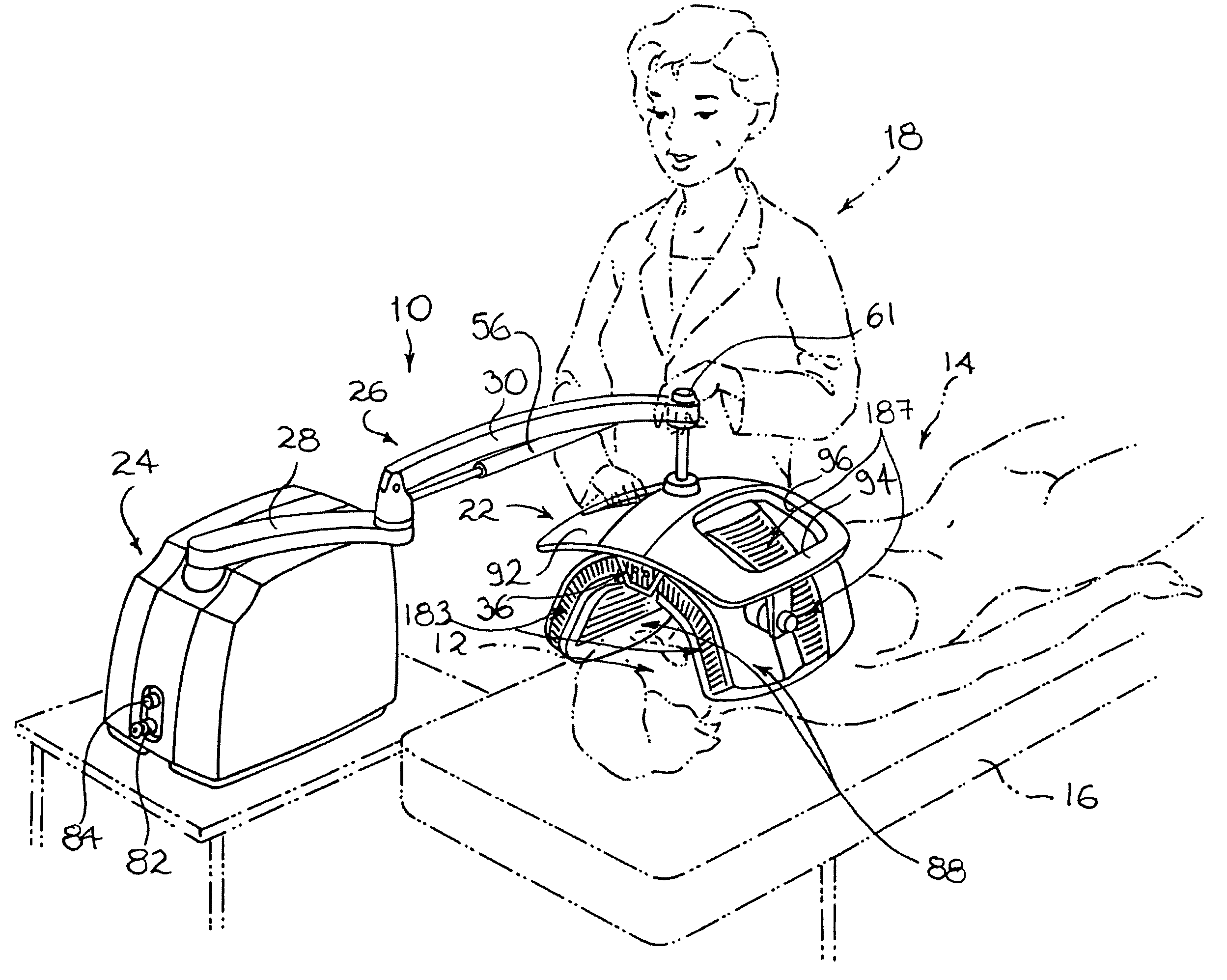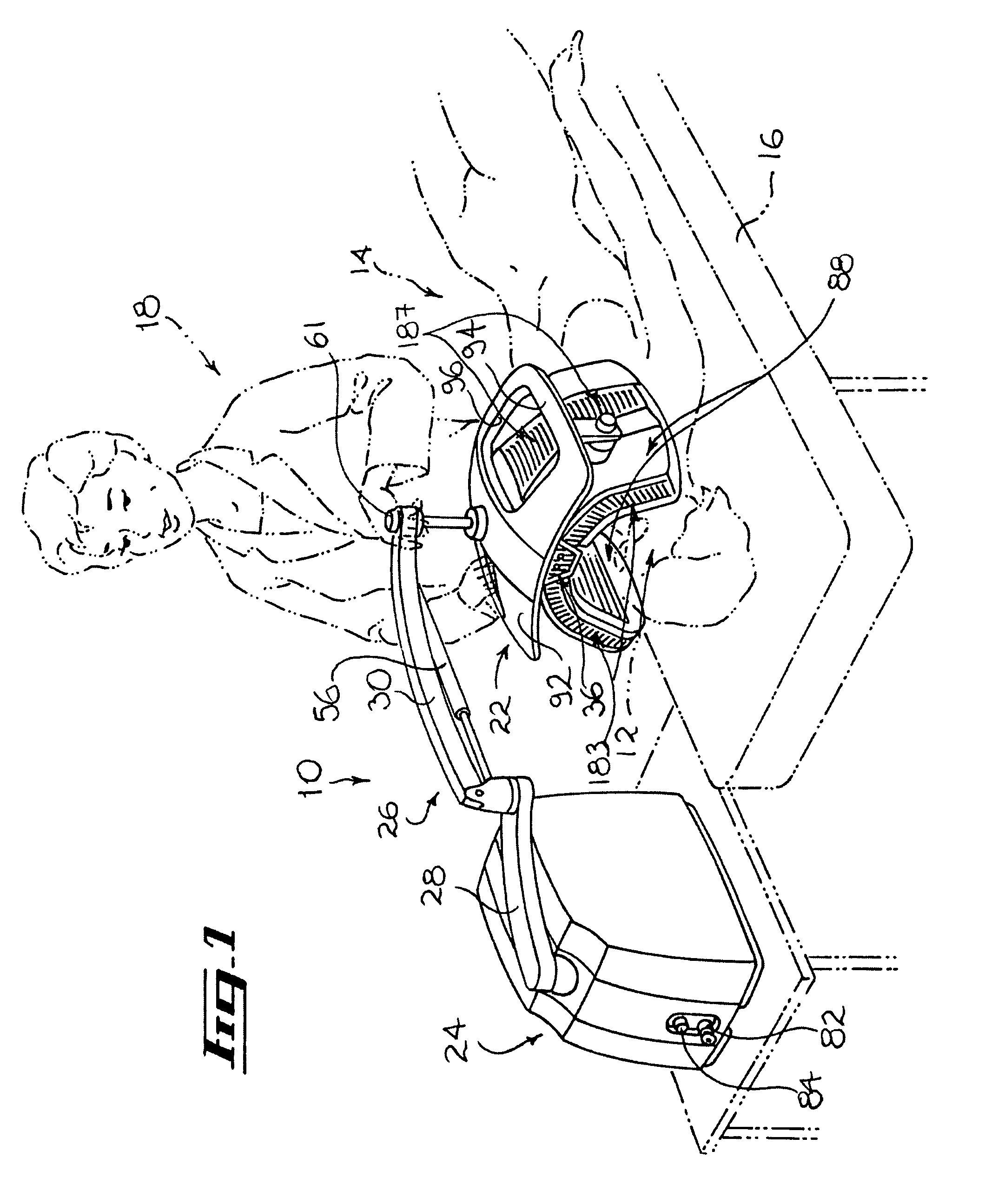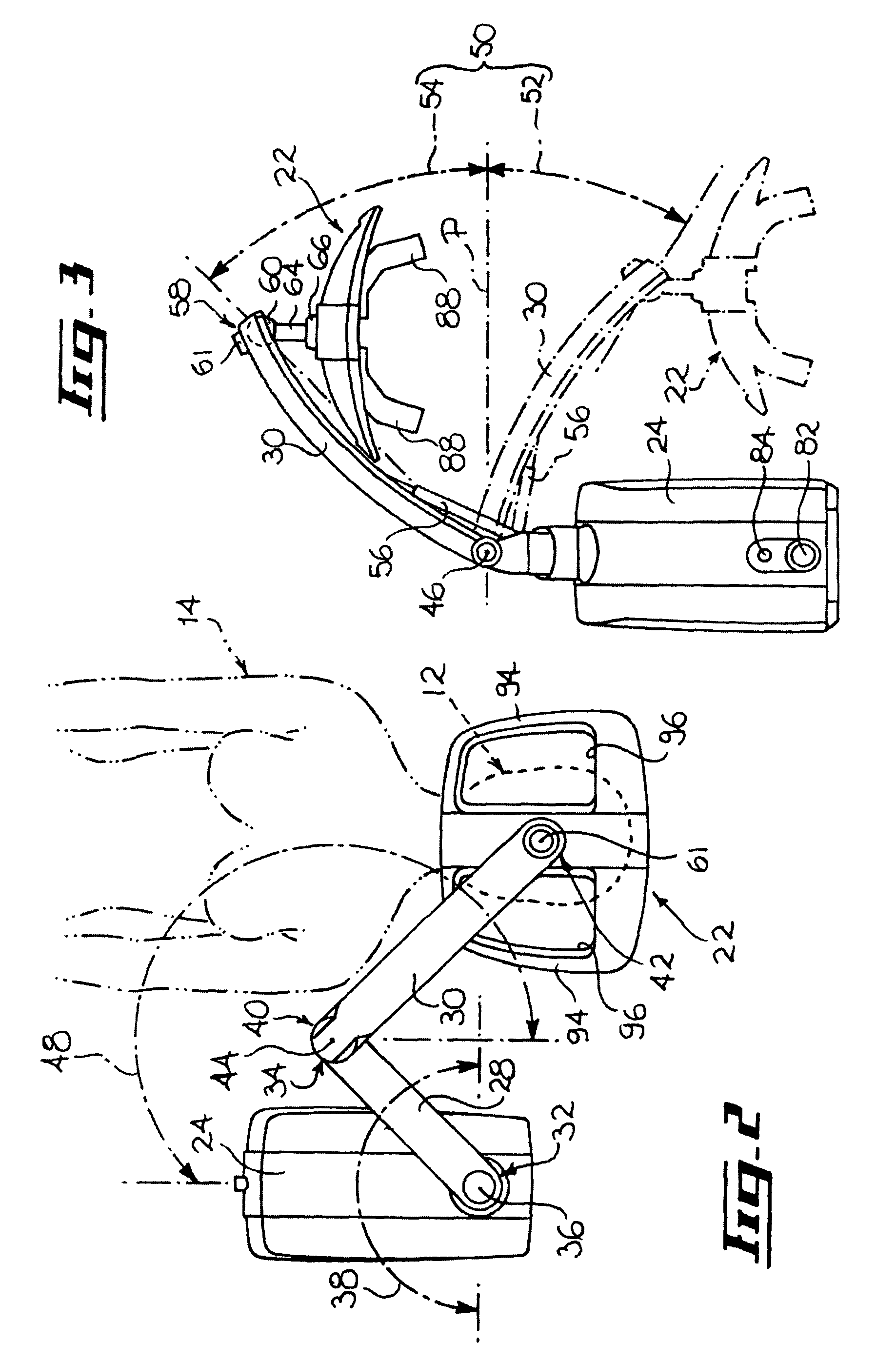Device for the treatment of mammalian tissues
a technology for mammalian tissues and devices, applied in the field of living tissue treatment, can solve the problems of affecting the treatment effect, and affecting the treatment effect, and achieve the effect of few treatments and easy operation
- Summary
- Abstract
- Description
- Claims
- Application Information
AI Technical Summary
Benefits of technology
Problems solved by technology
Method used
Image
Examples
example 1
[0325]This example describes in further details an the use of an innovative non-ablative, non-thermal LED system for skin rejuvenation in an in vitro model using human reconstructed skin.
[0326]Benefits associated with the enhancement of homologous collagen production with a light source for the treatment of aging skin in healthy patients involve the stimulation of specific subcellular photoreceptors located in the mitochondria of mammalian cells like dermal fibroblasts. The mitochondrial target or antenna molecule seems to be the last enzyme of the respiratory chain, the cytochrome c oxidase. Medical literature covering the use of light to activate dermal fibroblast collagen synthesis remains sparse, although stimulation of the fibroblast would result in a clinically relevant effect. Hence, critical parameters must be considered to boost collagen secretion using pulsed LED light source. For instance, specific wavelengths were suggested to induce increased growth characteristics in f...
example 2
[0360]This example relates to a periorbital rhytid improvement by non-ablative, non-thermal led photoinduction.
[0361]Stimulating skin cells to produce collagen can partly reverse wrinkles, facial sag, rough skin texture, and external signs of aging such as thinning skin, lack of firmness and dullness resulting from a reduction in collagen. Healthy collagen gives the skin its softness, resiliency, suppleness as well as its ability to repair itself (50, 54). On the other hand, damaged collagen molecules become stiff and inflexible, and the skin appears old. Increasing stimulation of collagen synthesis in aging skin is realistic and can substantially improve the appearance of fine lines and even deeper wrinkles when performed correctly. However, this procedure requires a comprehensive approach for which there is little reported clinical experience to date. A review of the literature indicates that the efficacy of LLLT (Low Level Laser Therapy) for skin rejuvenation has not been establi...
PUM
 Login to View More
Login to View More Abstract
Description
Claims
Application Information
 Login to View More
Login to View More - R&D
- Intellectual Property
- Life Sciences
- Materials
- Tech Scout
- Unparalleled Data Quality
- Higher Quality Content
- 60% Fewer Hallucinations
Browse by: Latest US Patents, China's latest patents, Technical Efficacy Thesaurus, Application Domain, Technology Topic, Popular Technical Reports.
© 2025 PatSnap. All rights reserved.Legal|Privacy policy|Modern Slavery Act Transparency Statement|Sitemap|About US| Contact US: help@patsnap.com



